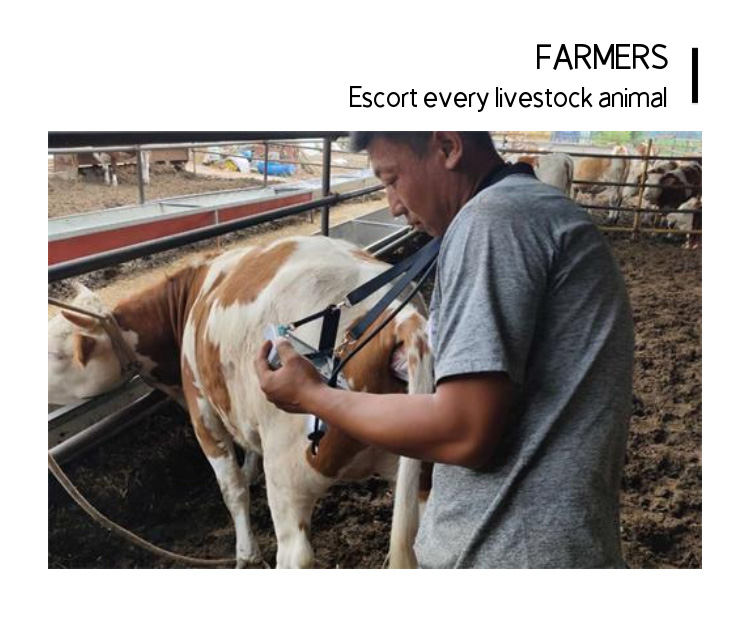The Importance of Bovine ultrasound machine Diagnostics in Livestock Husbandry
Evaluating production performance is crucial for both dairy and beef cattle management. Besides manual palpation, ultrasound testing has become the most commonly used method for monitoring and evaluating bovine reproductive performance. Ultrasound testing involves inserting an ultrasound device into the rectum to visualize the ovaries, матка, Репродуктивный тракт, and surrounding structures. The Easi-scan Bovine ultrasound machine diagnostic device, using a linear probe to produce 5.0-7.5 Hz ultrasound waves, creates a rectangular pattern. This is the most common ultrasound testing method. While current probes produce high-quality images of the tissue beneath the probe, curved probes produce wedge-shaped images of lower quality. Nevertheless, curved probes (convex array probes) are still acceptable in some cases.

Before performing a Bovine ultrasound machine test, the rectum should be cleared of feces as much as possible. The monitor is clipped to the wrist and inserted into the rectum, probing through the rectal wall. All internal reproductive structures are clearly visualized: the ovaries, uterine horns, uterine body, cervix, and vagina. The monitor remains clipped to the operator’s arm during the test, and the probe is removed from the rectum with the operator’s arm upon completion. Ultrasound testing takes about the same amount of time as palpation, though the time required is primarily determined by the animal’s sensitivity to the instrument and the operator’s proficiency. Однако, ultrasound testing can provide a wealth of important information not available through palpation, including early pregnancy detection, number of fetuses gestated, fetal viability, fetal sex, and ovarian or uterine structure. Rectal ultrasound can assess reproductive system function and compare reproductive system differences between cows, which is crucial for herd management.
Ovarian image from a cattle ultrasound machine system
portable ultrasound machine for cattle
Diestrus
During ultrasound examination, the ovarian tissue during diestrus appears solid and homogeneous, making cysts, corpora lutea, and other tissues difficult to detect. The most typical features of diestrus ovarian tissue are typically observed in nulliparous young dairy cows.
Characteristic changes in the reproductive system of dairy cows during estrus are the appearance of cysts, corpora lutea, and ovarian stroma. During ultrasound examination, various echogenic reflections cause grayish-white shadows to appear on the display.
Follicles
Follicles appear as echo-free areas within the ovarian tissue, and the follicle wall is difficult to separate from the secretory tissue. Due to the pressure of the probe on the surrounding ovarian tissue, the follicles are difficult to detect.
Ultrasound Imaging of the Corpus Luteum in Cows
The corpus luteum (CL) appears in two-thirds of the estrous cycle in dairy cows, but it is not observed in most cows during diestrus. It appears within the echogenic area of the ovarian tissue and contains a fluid-filled cavity. Compared to a CL cyst, a normal CL with a central cavity is 25 mm smaller in diameter, and the cavity occupies slightly less than one-third of the CL volume. Ultrasound examination can detect the CL four days after ovulation. If fertilization is not achieved, the CL begins to shrink 16 days after ovulation. Continuous ultrasound examination provides valuable information on the cyclical changes in the CL. Continuous Bovine ultrasound machine monitoring can aid in early pregnancy diagnosis. In ovaries containing a CL, an embryonic vesicle is often found in the ipsilateral uterine horn.
Ultrasound Detection of Uterine Pregnancy in Cows
portable ultrasound machine for cattle
Non-pregnant Uterus
The echogenicity of the uterus varies at different stages of the estrus cycle. A cross-section of the uterine horns reveals that the curvature of the uterine horns makes it easier to distinguish between the endometrium, basal layer, uterine cavity, and other uterine tissues. During estrus, the endometrium swells, making its folds more prominent. The contents of the uterine cavity vary at different stages of pregnancy, causing the cavity to constantly change. During ovulation, mucus accumulation prevents the uterus from reflecting ultrasound waves. Both mucus accumulation caused by ovulation and early pregnancy prevent the uterus from reflecting ultrasound waves, making it crucial to distinguish between the two. This distinction can be made by examining the presence of follicles and corpora luteum on the ovaries or the presence of a fetus in the uterus.
Ultrasound Detection of a Pregnant Uterus in Cows
Identifying non-pregnant cows as early as possible after artificial insemination can improve reproductive efficiency. Experienced operators can accurately determine whether a cow is pregnant 17 days after artificial insemination. The miscarriage rate is high during pregnancy, so extreme caution is required when diagnosing pregnancy. Most operators using rectal ultrasound can quickly and accurately detect whether a cow is pregnant 30 days after insemination on the farm. In cattle ultrasound machine, if no fetus is detected but allantoic fluid, fetal membranes, and their appendages are detected, it also indicates that the cow is pregnant.